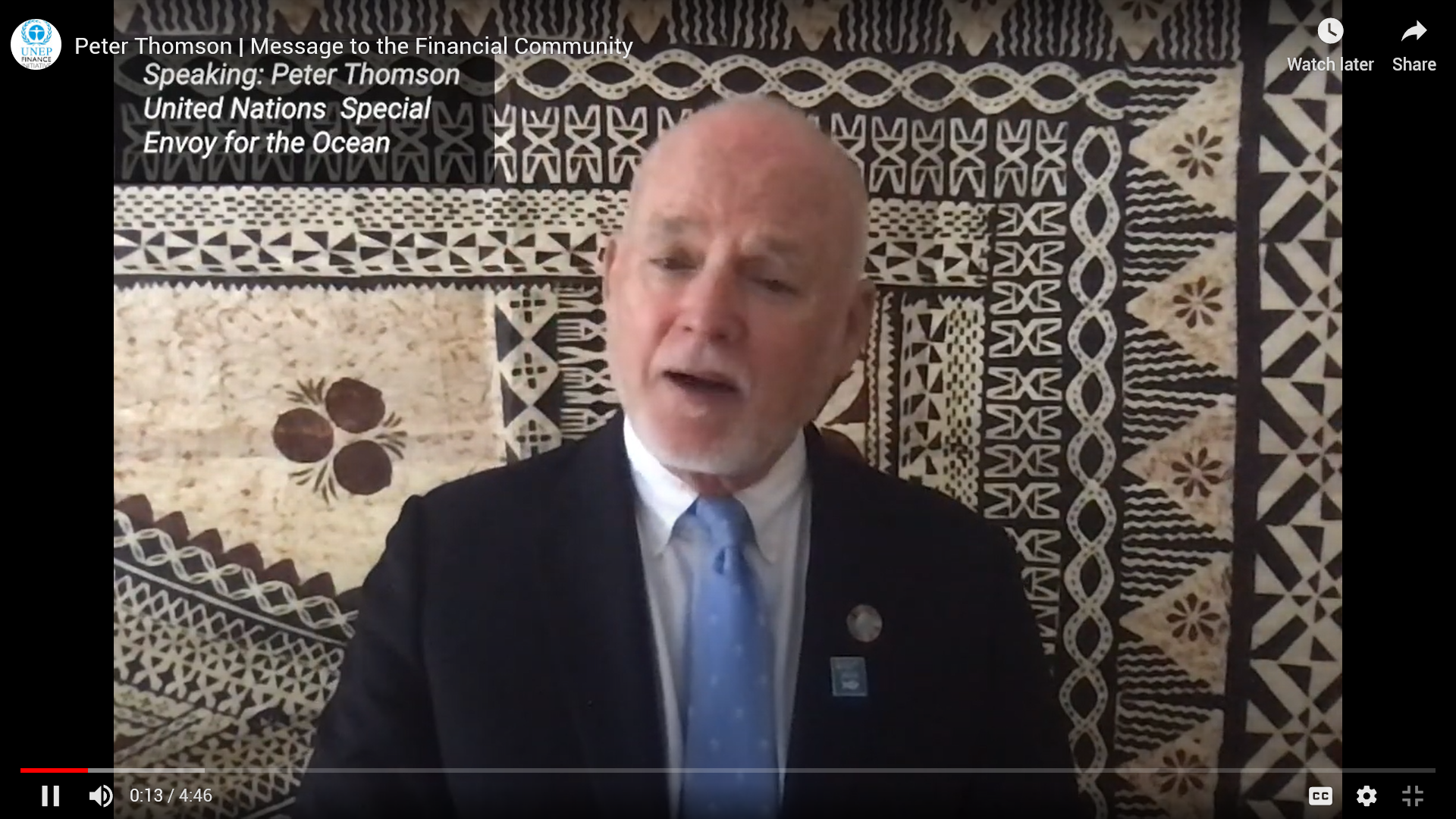UNEP FI kicked off Day 2 of its Global Roundtable with another day full of high-level keynotes, plenaries, regional focused panels and technical sessions with over 3,000 delegates. Launches included resources to support TCFD implementation.
UNEP’s Executive Director Inger Andersen said finance industry and its future profitability and our very own survival need natural systems. She called for the financial sector to show leadership to address the climate, nature and pollution crises, altering investments away from unsustainable consumption and production patterns, and to stop financing coal. She highlighted five essential actions for the finance industry to shift gears: 1. Start measuring the impacts of its financing, 2. Set real sustainability targets, 3. Follow the science 4. Align the entire portfolio; and 5. Be transparent and accountable. She cited the UN-convened Net Zero Asset Owner Alliance and the UN Principles for Responsible Banking’s Civil Society Advisory Body as examples of initiatives that are setting targets, following the science and promoting transparency and accountability.
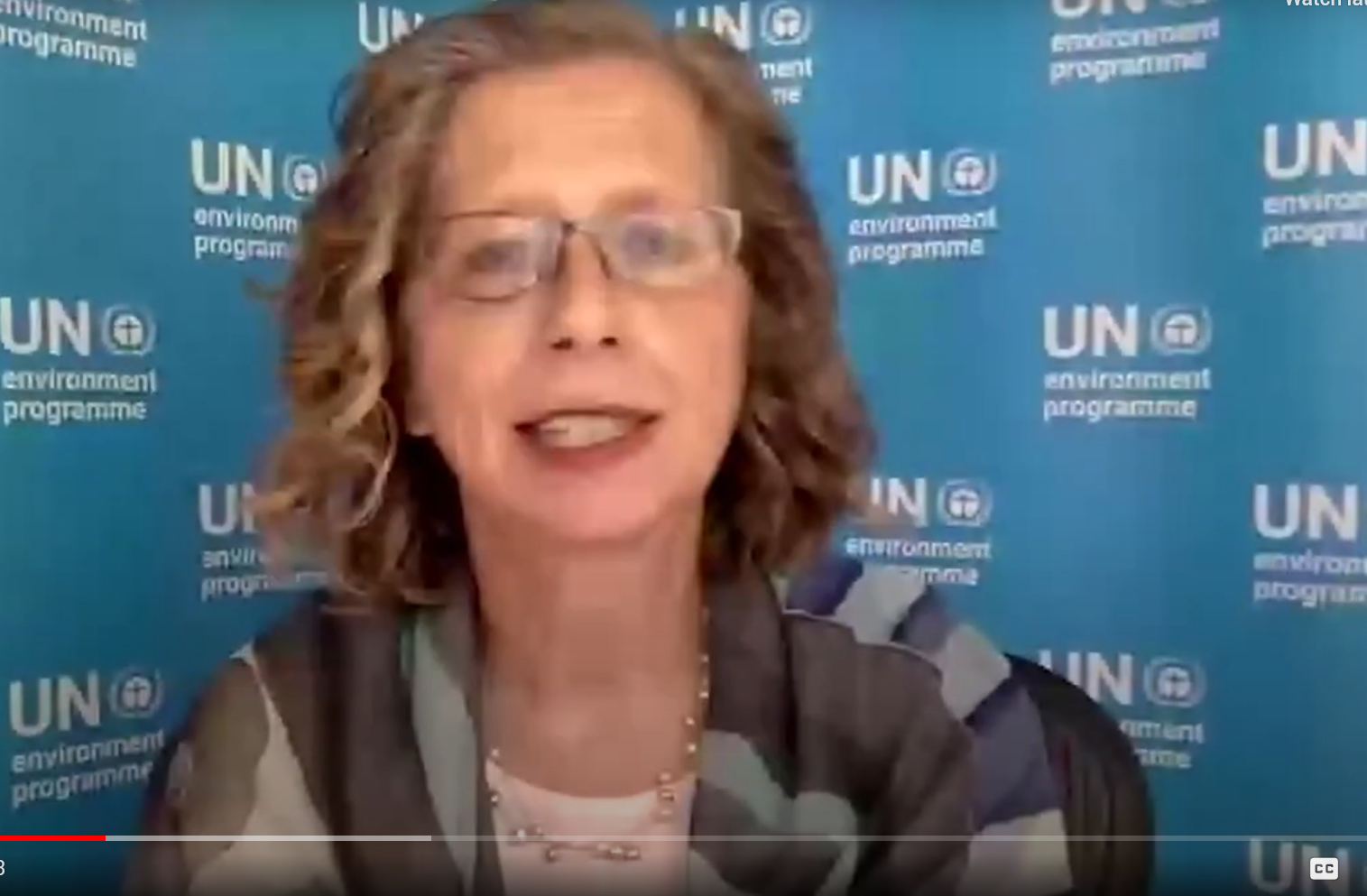
European Central Bank President Christine Lagarde warned that there is not enough green finance, and finance that claims to be green may not be green enough. More needs to be done because financial markets are probably not measuring risk properly and have not priced it in. All central banks have to ask whether taking excessive risk by simply trusting mechanisms that have not priced in massive risks that is out there and results from the impact of our action as human beings on our planet and how we impact the life of future generations by not fighting climate change. In the absence of a common shared definition and compulsory disclosure by companies we lack granular information assess whether something is green. This calls for intervention from legislators and regulators to correct market failures in green finance. One such measure is the EU taxonomy. However, more needs to be done to understand what is not green, and variations of green and grey. Of €750 billion in bond issuance to be launched from early 2021 onwards to respond to the consequences of the pandemic, 30% will be green investment.
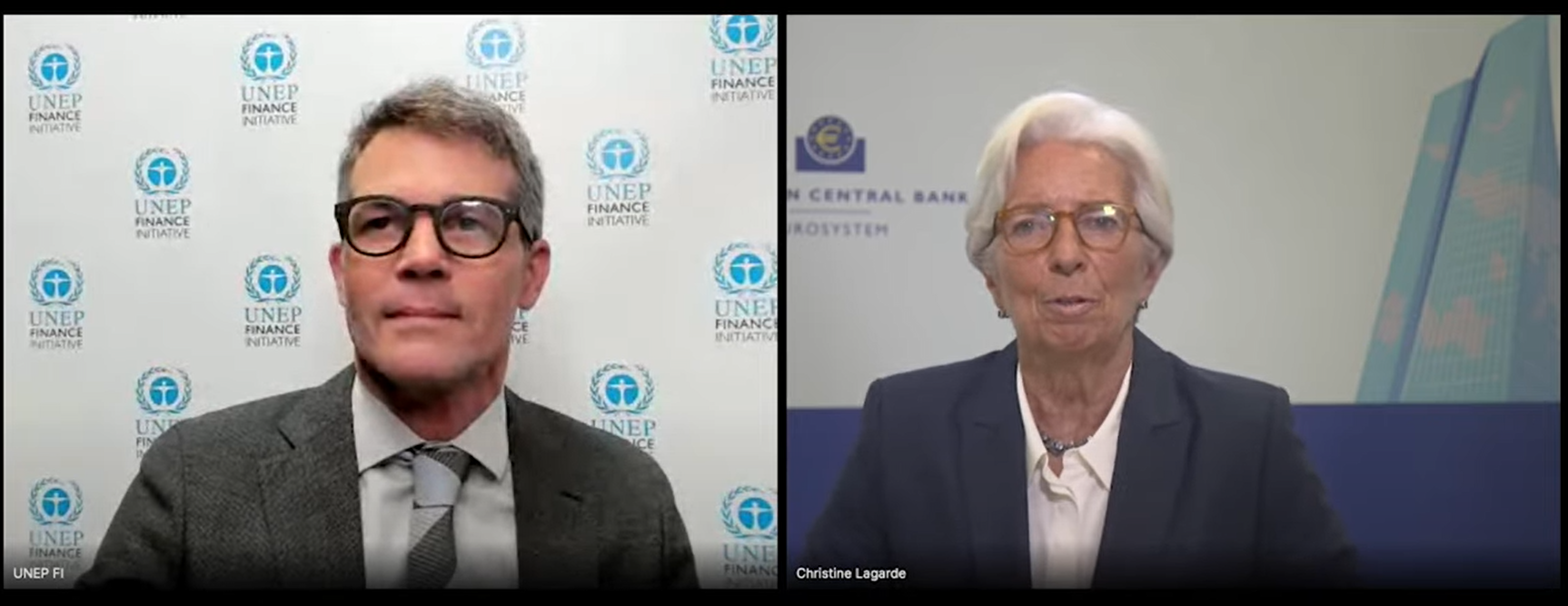
Inger Andersen also went on to lead a dialogue with leaders from two development banks Gustavo Montezano, President & CEO BNDES from Brazil and Rémy Rioux, CEO, of Agence Française de Développement. Discussions highlighted the important role of development banks in promoting sustainable finance, bringing together public and public sectors, and reaching the goals of the Paris Climate Agreement. Rémy Rioux said members of the International Development Finance Club have exceeded a target to mobilise USD150 billion in the first year since they committed to providing USD$1 trillion in climate finance at last year’s Climate Action Summit 2019. However, banks need to change their business models to become accelerators and play a greater role in aligning their institutions with international priorities and connect with national trajectories. Both speakers agreed that action by private banks and development banks need leadership and incentives from policymakers.
Corli Pretorius, Deputy Director, UNEP-World Conservation Monitoring Centre, called for financial institutions to step up and help transition to more sustainable economic system in the Decade of Action. She said the climate and nature crises need to be tackled together, warning that if we do not achieve biodiversity goals, the costs of achieving the other goals will be much higher. She pointed out that billions in investments needed to achieve the post-2020 Global Biodiversity Framework can be mutually reinforcing to achieve multiple Sustainable Development Goals (SDGs). Clara Barby, CEO, Impact Management Project, said impact measurement/management is central to all topics and all players with a role to play in the SDGs. She called for the industry to move from silos on impact to convergence across disciplines in order to accelerate change. Definitions, metrics, performance indicators, needs assessments, thresholds constitute the basis of impact management. Sola David-Borha, CEO, Africa Regions Standard Bank Group said the industry needs quality data that is consistent, and that the Principles for Responsible Banking set a global benchmark that enables banks to translate commitments to real actions, giving us a better chance of achieving the SDGs.
Enric Sala, National Geographic Explorer in Residence highlighted the three main risks to the ocean, and considers how banks, insurers, investors can take a sustainable approach to the blue economy; Elizabeth Mrema, Executive Secretary, UN Convention on Biological Diversity, called on financial institutions to bring a collective commitment to take action on biodiversity loss in line with the Post-2020 Global Biodiversity Framework and Peter Thomson, UN Special Envoy on the Oceans said financial institutions cannot ignore the enormous impact their activities have on the oceans’ health, and calling on them to engage with the Sustainable Blue Economy Finance Initiative and Principles.
In a dialogue with Fiona Reynolds, CEO, Principles for Responsible Investment, Sir Ronald Cohen, Chairman of the Global Steering Group, Impact Investment and The Portland Trust said that the weight of ESG money has already shifted the scales in favour of companies creating less environmental damage. Investors should invest all their assets in ESG and impact investment to help build a fairer and more sustainable world. Now that we can measure the impact performance of companies, we need governments to mandate that every company starting three years from now has to publish impact-rated financial accounts, in order to move down the path of shifting from shareholder capitalism to stakeholder capitalism and to provide the tools for companies to have transparency on impact.
Launches at the Global Roundtable 2020
Climate Risk Applications: Outputs from UNEP FI’s The Task Force on Climate-related Financial Disclosures (TCFD) Banking Pilot
UNEP FI released two reports as outcomes of UNEP FI’s second banking pilot to implement the Task Force on Climate-Related Financial Disclosure (TCFD) recommendations.
The first provides concrete and actionable guidance on integrating climate risk within a financial institution. From Disclosure to Action: A Guide to Implementing the TCFD framework within Financial Institutions provides a stock-take on the myriad ways financial institutions are incorporating climate risk considerations into their operations. Thirty-nine financial institutions across six continents worked to improve their climate risk assessments and disclosures through the pilot. Applications of climate risk principles from the governing board to business line are explored and the report shares case studies and results of a survey of participating banks to provide vivid insights into the latest practices in the financial sector.
You can access the Guide here.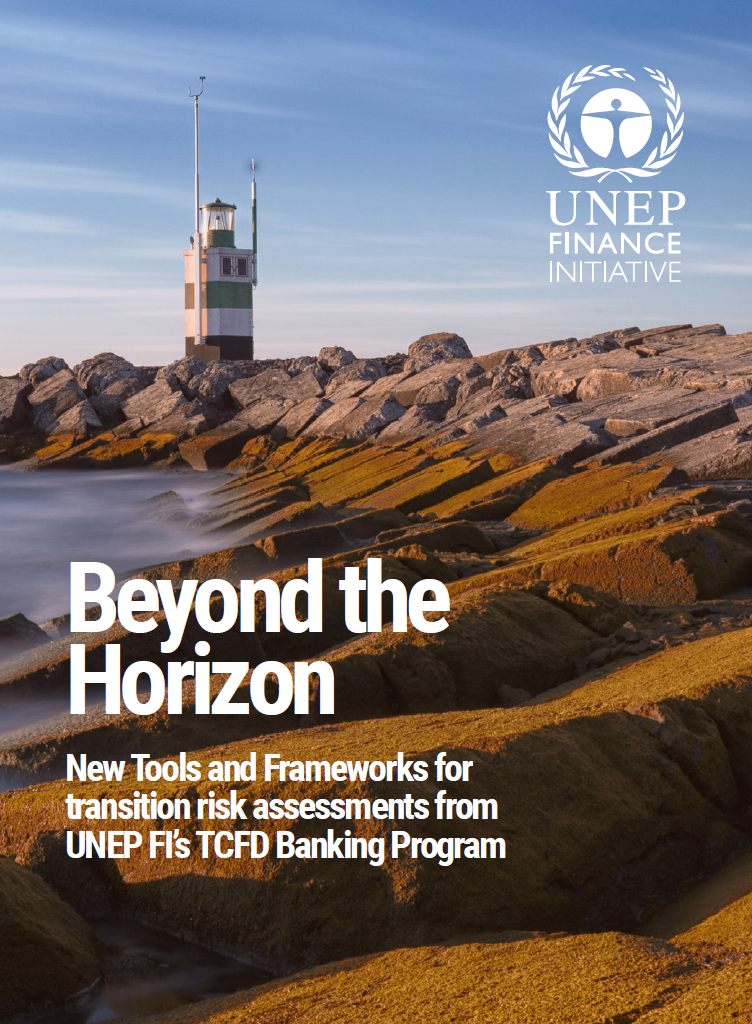
The second – Beyond the Horizon, New Tools and Frameworks for Transition Risk Assessments – outlines advances in transition risk
analysis resulting from the year-long TCFD Banking program and the 39 participating global banks program. Sector-specific working groups participants explored transition risks in a broad range of economic sectors and worked with the management consultancy Oliver Wyman and the UNEP FI Secretariat to extend a transition risk methodology developed in the first pilot in 2018 to include the latest climate scenarios, including reference scenarios from the Network for Greening the Financial System. The report accompanies the release of the first user-friendly webtool last month, Transition Check, which is free for all UNEP FI members. The program also developed a comprehensive transition risk heatmap that provides insights into how climate-sensitive sectors may be impacted by a low-carbon transition. The report includes a comprehensive transition risk heatmap that provides insights into how climate-sensitive sectors may be impacted by a rapid low-carbon transition. The Transition Check and the transition heatmap are expected to be valuable tools for the financial industry in evaluating, disclosing, and managing transition risks, as they will enable institutions to conduct climate risk analysis in a standardized and comparable format, which is essential for improving climate risk disclosures overall.
You can find the report here.
In-depth sessions:
Progress-to-date in Implementing Sustainable Finance Practices in Africa
This session put progress on sustainable finance within African markets into context and provided insights into how six banks and insurers are aligning their strategies and operations as signatories of the Principles for Responsible Banking and Principles for Sustainable Insurance. Speakers covered broad environmental, social and governance (ESG) considerations, including financial inclusion and a social safety net for vulnerable groups, especially in the face of Covid-19, and how the response to the pandemic has catalyzed more serious attention to the climate change challenge.
Is the MENA Witnessing a Paradigm Shift in Sustainable Finance?
Financial institutions from Egypt, Morocco, Jordan, Lebanon, Bahrain and one MDB who shared their experience on the development/adoption of sustainable finance practices in their institutions, countries and the Middle East and North Africa. The speakers provided examples on the successful sustainable financing models used, discussed challenges, and shared their visions on how to accelerate the transition to a green and inclusive economy in the region despite challenges posed by the pandemic and a limited regulatory framework.
Climate change in the Asia Pacific region: How much do banks and investors know about the risks and opportunities?
This session focused on the specific physical hazards and transition risks facing Asia Pacific and how financial institutions are assessing and disclosing on them. Beyond a view of current practices, the panelists also discussed the importance of financial institutions in supporting resilience and mitigation efforts across this diverse and fast-growing region. A New Zealand Sustainable Finance Forum plans to release a roadmap for a sustainable financial system by 2030 and the New Zealand Government is considering a proposal to require all listed issuers to report against the TCFD recommendations, which would capture about 90% of assets in New Zealand. Banks have crucial role in setting industry norms.
Renewed Sustainable Finance Strategy in Europe
This session looked at sustainable finance developments in Europe including identified key elements of feedback from the stakeholders’ consultation on the Renewed Sustainable Finance Strategy. The session highlighted aspirations from the banking and investment sectors including one to ensure the strategy embeds perspectives on how finance may support the transition of business models and of the real economy at large. The upcoming Sustainable Finance Strategy for Europe will integrate the objectives of both the European recovery plan and the European Green Deal, while reflecting on the need for international collaboration. In particular it should help strengthen resilience in emerging markets which will be hardest hit and most affected by climate change and other challenges such as environmental degradation. There was a desire for core international standard setters such as the G20 to take on sustainable finance for a multiplying effect. To the extent possible regulatory reform need to align with existing frameworks such as TCFD and platforms with good practices already in the market.
Harnessing insurance products and solutions for the SDGs
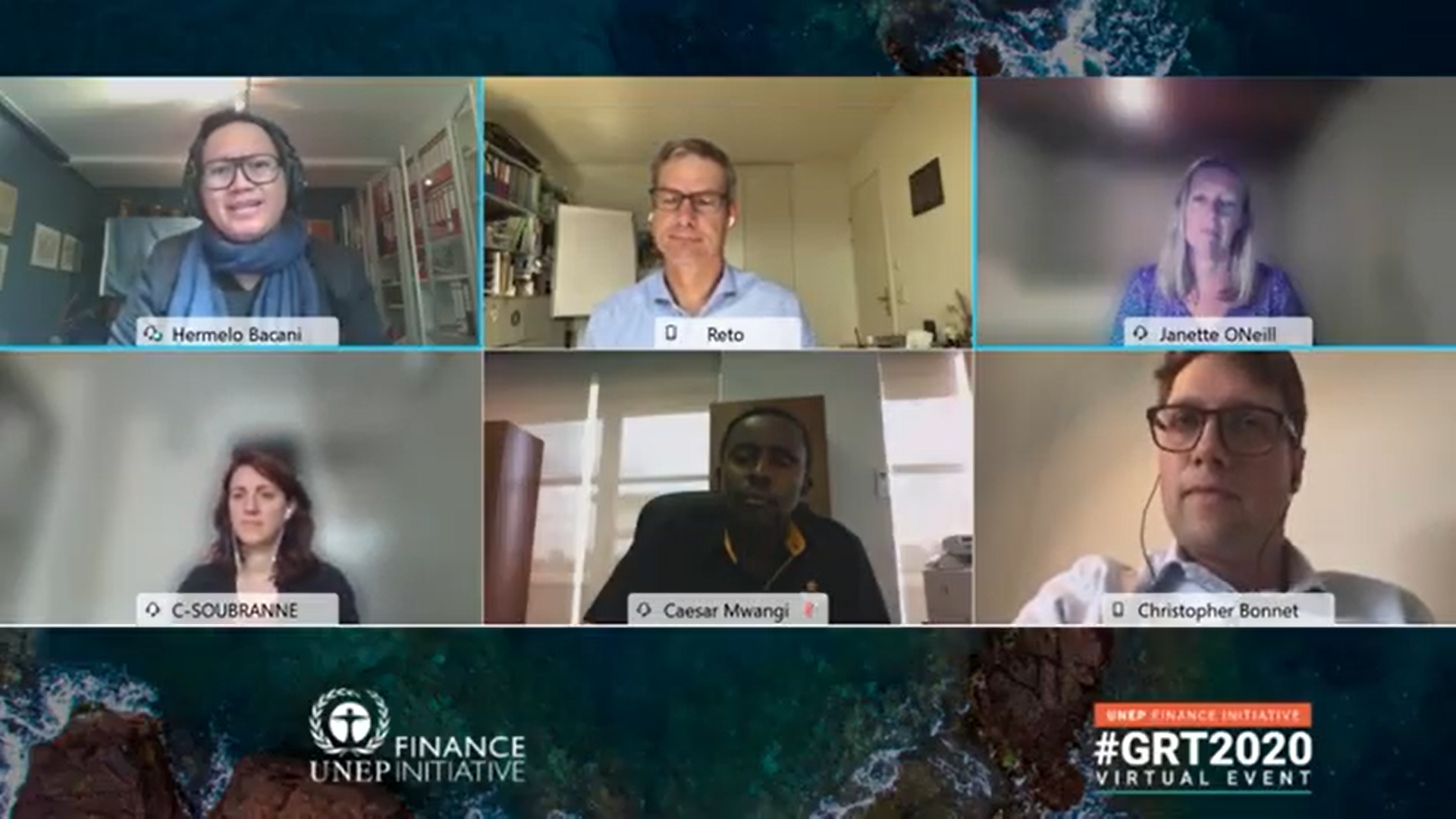
This session discussed the latest thinking and practices by leading insurers from across the globe on how they are harnessing insurance products and solutions for the SDGs, and discuss practical next steps for the insurance industry and its stakeholders to develop Insurance SDGs. Despite progress on the SDGs, action is not yet advancing at the speed or scale required. Currently, many insurance products and solutions already support achieving the SDGs but the industry lacks a systematic mapping of such products and solutions, a clear narrative, and methods to measure impact. There is also a lack of understanding on the types of insurance products and solutions needed—both existing and new—to support the achievement of various SDGs, and how such products and solutions can be developed and brought to scale. Finally, there are no global goals or targets for the insurance industry linking its insurance portfolios to the SDGs. In response, in July the PSI launched an agenda-setting collaborative initiative to develop “Insurance Sustainable Development Goals” that would harness insurance products and solutions to help achieve the SDGs.
Sustainability priorities for the life & health insurance industry in a post-COVID world
Compared to non-life insurance business, there has generally been less understanding of the key ESG issues—for life & health insurance business. Much of the sustainability discussions has revolved around the role of life & health insurers as institutional investors, but not necessarily about their core insurance business. This session provided insight from life & health insurers from across the globe on their sustainability priorities in the context of their insurance business, and what they deem to be key risk management and insurance challenges and opportunities, particularly in a post-COVID world. The session will help shape a PSI global strategy for the life & health insurance industry and sustainability, and will contribute inputs to shaping the PSI global initiative to develop Insurance Sustainable Development Goals.
Next steps in taxonomy development
The EU taxonomy to classify sustainable economic activity can be used by investors to disclose the sustainability of their investments and avoid greenwashing. UNEP FI and the European Banking Federation are undertaking a joint project to see how the taxonomy can be implemented by banks. The development of a taxonomy in Canada is being led on a voluntary basis and is expected to be released in early 2021. Given the natural-resource based economy in Canada, the taxonomy focuses on greenhouse gas emissions and mobilizing capital to help facilitate the transition under the Paris Agreement. A taxonomy in Colombia is being developed by the Ministries of Environment and Finance and national statistics department, as an instrument for financial market development. The taxonomy is science-based, with the aim is for capital markets and issuers to identify what is green and to provide transparency and clarity. Its initial scope it limited to climate change adaptation and mitigation objectives. In developing the local taxonomy, Colombia is trying to follow the principles and architecture of most widely recognized taxonomies, such as that of the EU to ensure it is harmonized with other international taxonomies to help international investors navigate what’s green in Colombia.
Blue economy: Financing Life Below Water
This session looked at ‘why the ocean and why now,’ highlighting that ocean is an important resource that is under pressure from overfishing, pollution and climate change. Panellists discussed the business case for investing in the blue economy, how to redirect financial flows, encouraging financial institutions to look at ocean-related issues as a whole, and to use the Sustainable Blue Economy Finance Principles as a guiding framework for ocean finance.
Barriers to entry were explored, including lack of investment-grade projects and the lack of expertise and specific ocean knowledge in the financial sphere. Blended finance was considered a promising avenue for ocean finance, and appetite in this area continues to increase. The Ocean Risk and Resilience Alliance (ORRAA) launched its Innovation Challenge, calling for proposals for novel and scalable finance and insurance products that build costal resilience and reduce ocean risk.
Setting biodiversity targets
This panel focused on how to speed up the financial sector’s response on nature loss, and how to enable banks to align their policies, risk management structures, portfolio reviews and client engagement with better biodiversity and ecosystems management. Panellists discussed the urgent need for science-based KPIs and metrics and standardised approaches for data and accounting to create a common understanding for the financial sector. Data on specific companies, rather than regions or sectors, was called for to make it more actionable for the financial sector, as well as more accurate data on ecosystem health. Panellists called for a cohesive global ambition around biodiversity, akin to the 1.5 degree headline figure of the Paris Agreement. Biodiversity target-setting was lauded as a good place to start for financial institutions, though panelists stressed the importance of implementation, discussing successes and challenges faced so far. The panel also explored how financial institutions in regions worldwide can accelerate a response on biodiversity. Collaboration between the public sector, private finance and scientific community was pointed to as crucial to build a consistent way forward with a level playing field. Key initiatives highlighted included the Biodiversity Working Sub-Group under the Principles for Responsible Banking, assessment tools such as ENCORE and the recently-launched Informal Working Group on a Task Force on Nature Related Financial Disclosures (TNFD).
Making it all come together: Holistic Impact Analysis to get from SDG 1 to 17
Representatives from leading banks came together to discuss Holistic Impact and how they are embedding impact analysis requirements in the Principles for Responsible Banking last year. The development of exciting new Impact Analysis tools were highlighted during the panel session including a tool focused on Real Estate, and another focused on Investments, under development within the Asset Management group of the Principles for Responsible Banking. Both tools are scheduled for release in 2021. Click here



